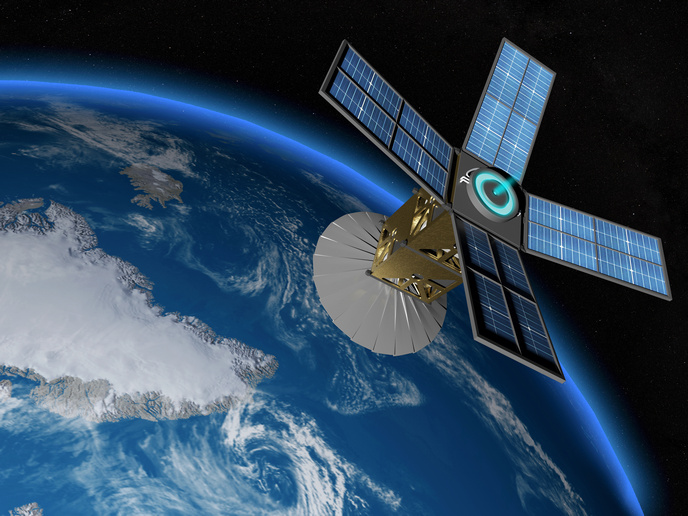In-space electric propulsion: powering the future EU space ecosystem
Over the last decade, advances in microelectronics and reduced launch costs have led to an increase in the number of satellites being put into orbit. Tens of thousands of satellites are now planned for launch in the coming years with the aim of improving Earth observation, navigation and communications. There are currently more than 5 000 satellites in low-Earth orbit (LEO), circling our planet at altitudes ranging from 200 to 1 600 km. However, LEO satellites are subject to orbital decay, where their distance from Earth gradually decreases, requiring an efficient low-thrust propulsion system for orbital ‘station keeping’. Electric propulsion (EP) is a revolutionary lightweight and highly efficient technology that is uniquely qualified to keep LEO satellites traversing above the globe. This class of space propulsion makes use of electrical power to accelerate a propellant through different possible electrical and/or magnetic means. The use of electrical power enhances the performance of satellite thrusters compared to conventional chemical thrusters. Unlike chemical systems, EP requires very little mass to accelerate a spacecraft. The propellant is ejected up to 20 times faster than from a classical chemical thruster and therefore the overall system is many times more efficient. This fact is of particular importance for spacecraft intended for in-orbit servicing and transportation missions. High-power EP systems could also contribute to missions to the moon, Mars and the asteroid belt as their higher power translates into higher thrust values, compared to chemical propellants or solar energy from onboard panels. EP is a key enabling and strategic technology for the EU Future Space Ecosystem and for ensuring European global leadership in the areas of in-space operations and transportation. Its development will also reduce Europe’s dependency on foreign suppliers of critical space technologies, ensuring its independent access to space. This new CORDIS Results Pack highlights the main achievements of 12 EC-funded Horizon research projects within the Strategic Research Cluster (SRC) on Electric Propulsion. The SRC strengthened European EP research along two complementary technology development lines. The first focused on incremental technologies like Hall-effect thrusters, gridded ion engines and high-efficiency multi-stage plasma thrusters. The second featured other promising and potentially disruptive technologies in the field of EP, including innovative thruster concepts and new supportive technologies. The EPIC2 project identified activities that address research challenges and assessed projects’ activities and results. CHEOPS LOW POWER, CHEOPS MEDIUM POWER and ASPIRE developed EP systems using the Hall-effect technology, which efficiently accelerates ions to produce high thrust. GIESEPP-MP demonstrated the first European plug-and-play gridded ion engine standardised EP platform. HEMPT-NG2 developed an ion propulsion technology based on the use of permanent magnets for plasma confinement. Other promising and potentially disruptive concepts in the field of EP included innovative thruster concepts and new supporting technologies. HIPATIA tested an electromagnetic plasma propulsion system for use in non-geostationary satellites and other small spacecrafts. NEMESIS developed an electride-based cathode technology with superior properties to conventional ceramics. Meanwhile, iFACT investigated the use of iodine as a propellant for EP to help reduce fuel costs and volume. PJP developed a pulsed electrical thruster based on vacuum arc physics that uses a solid metal propellant. EDDA tested how onboard solar arrays deliver electric power to thrusters without the need for a power converter. AETHER focused on air-breathing technology, using residual gases of the upper atmosphere as a propellant instead of on-board propellant, allowing satellites in Very Low-Earth Orbit (VLEO) to remain in service for longer and become more cost-effective.



